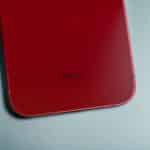Watches that do more than tell time have gripped imaginations since the 1940s, with Dick Tracy’s iconic two-way wrist radio. Since then we’ve seen all kinds of funky watches, most recently GPS models that can track running distance and calories burned, and watches that can deliver tweets, texts and headlines. There are now rumblings that Apple might soon invade the smartwatch space, though the company is maintaining its customary silence.
Perhaps the strongest indication of the enthusiasm surrounding smartwatches comes from a Palo Alto, Calif., start-up called Pebble Technology. Its customizable Pebble E-Paper smartwatch for iPhone and Android kicked butt this past year on the Kickstarter crowd-funding platform, with nearly 69,000 individual backers raising almost $10.3 million. That was well north of Pebble’s original goal to raise $100,000, a level reached in just two hours. It was among several watches and wearable computers shown at the 2013 Consumer Electronics Show.
I’ve been testing the Pebble watch and, while I recognize its potential, I don’t think it does quite enough yet to justify its fairly steep $150 price. It needs more apps for that.
But these are early days. Unless you were one of the original Kickstarter backers, ordering Pebble today — at getpebble.com — means you aren’t likely to get the watch until April or May, when perhaps it will do more to live up to that potential. CEO Eric Migicovsky says only 6,000 watches have been distributed.
There are all kinds of reasons people wear watches, among them fashion. Pebble isn’t bad-looking. The waterproof watch comes in several colors — arctic white, cherry red and the watch I tested, jet black. You can replace the watchbands with standard-size (22mm) bands.
But many members of the cellphone generation have happily gone watch-free. Sure, there are benefits to a watch that might track your physical activity or provide quick snippets of useful information. It’s equally reasonable to question how smart it is to wear a watch that largely duplicates the information you already get off the phone in your pocket or purse, no matter how much faster it is to glance at your wrist.
Pebble actually works in tandem with an app on your iPhone or Android device, via Bluetooth technology (the watch is incompatible with BlackBerry and Windows Phones).
Answering the phone
When you get a phone call, the caller ID info is displayed on the watch. You can press one button on the watch to answer the call or another to reject it. Once on a call, you can hang up from your wrist.
Pebble can also display text messages and e-mail notifications, though the setup can be cumbersome. If the messages are lengthy, you can press up or down buttons to scroll through them. For now it can also deliver Facebook notifications, but only on Android. Pebble devices connected to Android can also do Google Voice, Google Talk and WhatsApp. (IPhone support is coming.) Tweets on the Pebble are not yet supported via either platform.
The watch doesn’t have a microphone or speaker, but you can use it to control the music on your phone. You can glance at the watch face to view the artist and title of a song. You can skip to the next track or go back to the previous selection. There are limits, though. You can’t search for music from your wrist, so you’ll want to arrange what you want to listen to ahead of time. On the iPhone, for example, I could only play songs included in the last playlist or app that I was listening to, even if I listened through the Spotify or Pandora apps. With a few exceptions, the music feature worked as advertised.
You set up the watch by downloading the free Pebble app onto your iPhone or Android and pairing the watch to the phone through Blue-tooth. From the app on the phone, you can add new watch faces to those already on the Pebble. I switched back and forth between a Classic Analog watch face and the Fuzzy Time face that reports the time in five-minute increments (for example, it’ll say “twenty five to eleven,” written out, even when the time is actually 10:36). The watch can store up to eight watch faces at one time.
You will also be able to add apps as they are made available, including a cycling app that taps into GPS on the phone to have the watch track your speed and distance. A FreeCaddie golf-range-finder app that is also under development will let you know how far you are from the green at more than 25,000 golf courses.
Battery life
You charge Pebble by connecting one end of a proprietary cord to the USB port on a computer and the other end to the watch. The company says you’ll get five to seven days between charges, depending on the frequency of notifications the watch receives. My battery died on the shorter end of that range.
Pebble should become more appealing over time as more apps become available. But all bets are off if Apple jumps into the fray. An Apple smartwatch would likely tie into the iOS ecosystem and, if published reports are to be believed, could include a bendable glass display. Either way, it appears the market for smartwatches is heating up. Still only time will tell whether such watches attract a mainstream following or remain a niche product.
USA Today
(c) Copyright 2013 USA TODAY, a division of Gannett Co. Inc.










